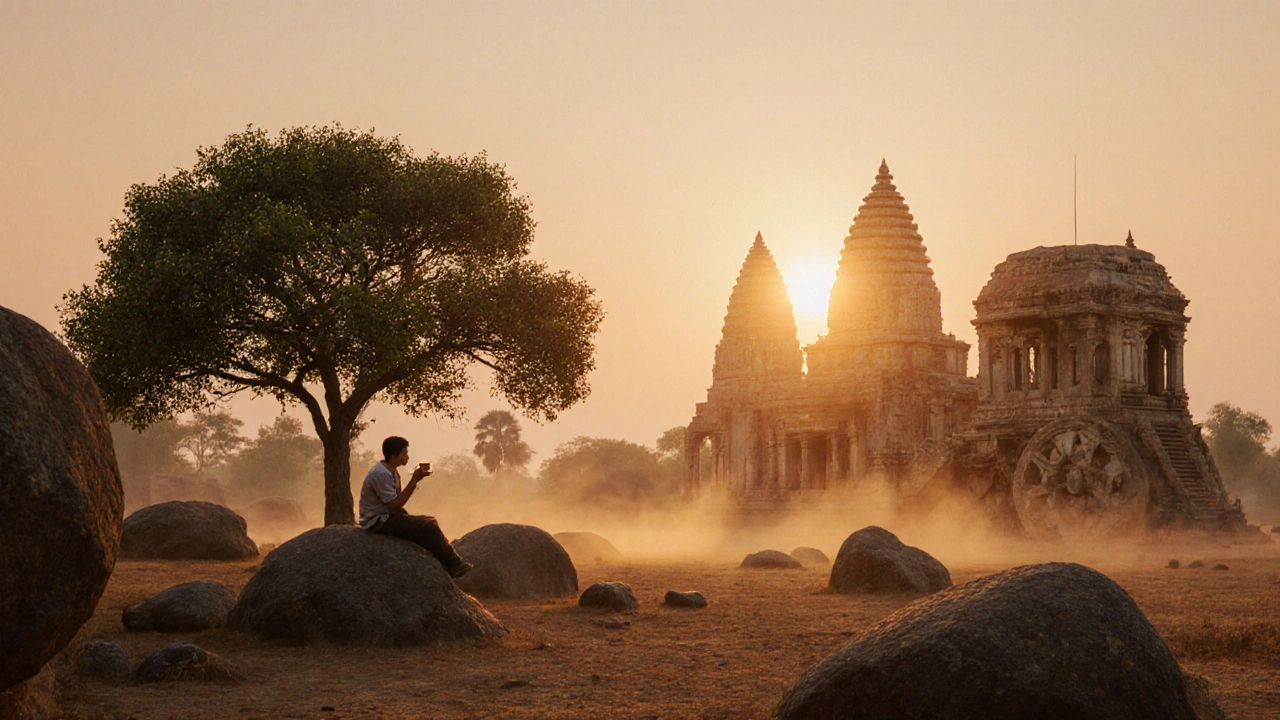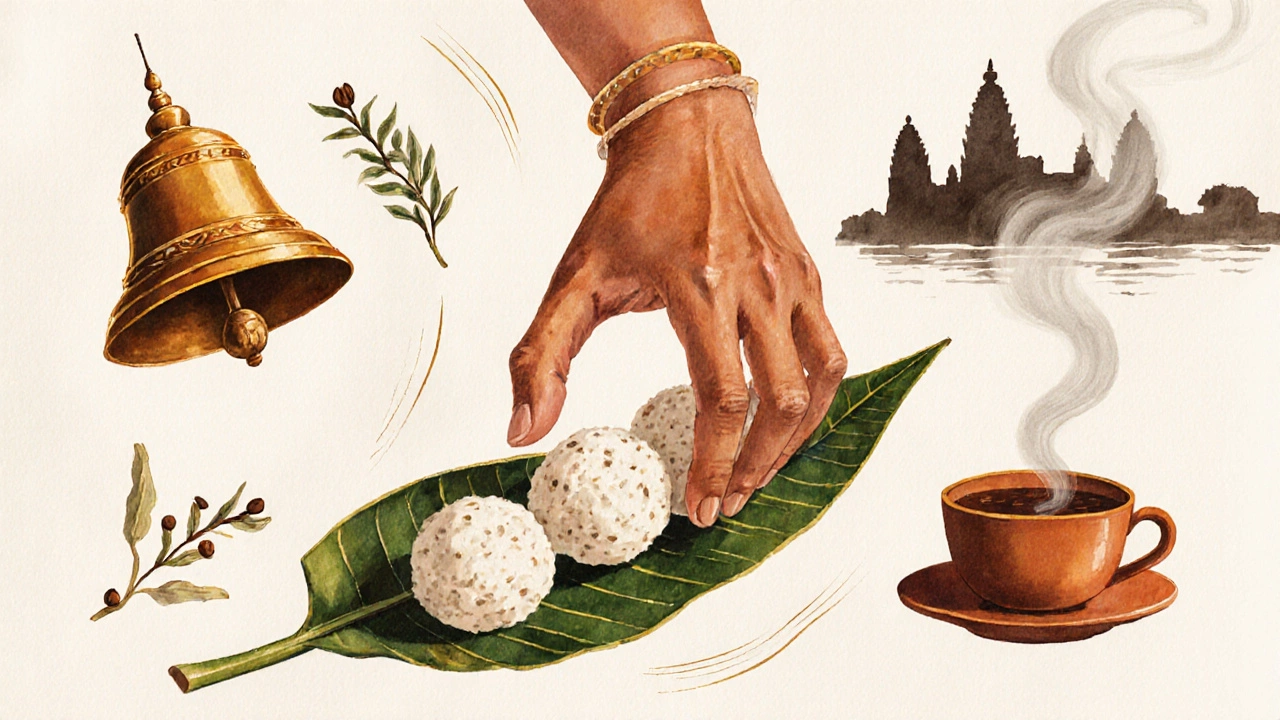How Long to Spend in South India? A Realistic Itinerary Guide
 Nov, 15 2025
Nov, 15 2025
South India isn’t a single destination-it’s a mosaic of ancient temples, misty hills, backwater canals, spice-scented streets, and beaches where the Arabian Sea meets golden sands. You can’t rush it. You can’t squeeze it into a week and call it done. But you also don’t need three months. The real question isn’t how long to spend in South India-it’s what kind of experience you want.
Minimum Viable South India: 7 Days
If you’ve got a week, you’re not seeing South India-you’re sampling it. This is for travelers who want to touch the soul of the region without getting lost in it. Start in Mysore. The palace glows at night, the silk markets buzz, and the Chamundeshwari Temple overlooks the city like a silent guardian. Then hop on a 3-hour train to Coorg. Coffee plantations stretch across hills like green velvet. Wake up to the smell of fresh brew, not traffic.
From Coorg, fly or drive to Munnar (4-5 hours). The tea gardens here are postcard-perfect. Stay in a plantation bungalow. Take a walk through rows of tea bushes, pick a leaf, and taste the difference between plucked and processed. End your week in Kovalam, where the beach isn’t crowded, the water is calm, and the sunset turns the Arabian Sea into molten gold.
This route covers culture, nature, and relaxation. But you won’t see temples with 1,000 pillars. You won’t float in a houseboat. You won’t taste authentic Kerala sadya. You’ll have a taste. And that’s fine-if you’re coming back.
The Sweet Spot: 10-14 Days
This is the range most travelers wish they’d given themselves. You start to breathe. You stop checking your watch. You notice the way temple bells echo differently in the morning versus the evening.
Begin in Hampi. The ruins here aren’t just ancient-they’re surreal. Boulders the size of houses, broken chariots, temples half-swallowed by jungle. It’s like walking through a forgotten movie set. Spend two days here. Climb Matanga Hill at sunrise. Watch the light hit the Vittala Temple’s stone chariot. Eat a simple meal of jalebi and filter coffee under a tamarind tree.
Next, head to Mysore. Not just the palace-visit the Devaraja Market. The smell of sandalwood, turmeric, and dried chilies hits you before you even step inside. Buy a small pouch of black pepper. It’ll last you months back home.
Then, take the overnight train to Kochi. Arrive in the morning. Walk through the Jewish Synagogue, then the Chinese fishing nets at Fort Kochi. In the afternoon, book a houseboat ride through Alleppey’s backwaters. Not the flashy ones. The quiet ones. The ones where the driver knows where to stop for fresh coconut water and where the kingfishers perch. You’ll see women washing clothes on the banks, kids waving from small boats, and herons standing still like statues.
End in Kovalam or Varkala. Both have cliffs, quiet beaches, and yoga shalas where you can sit for an hour and just watch the waves. No rush. No schedule. Just salt air and silence.
Deep Dive: 21 Days or More
If you’ve got three weeks, you’re not a tourist. You’re a visitor. You’re letting the rhythm of South India change you.
Start in Badami. The rock-cut temples carved into red sandstone cliffs are older than most European cathedrals. Climb up to the Bhutanatha Temple at dusk. The light turns the stone red-orange. The call to prayer from a nearby mosque blends with the distant hum of temple bells. No one explains it. You just feel it.
From there, head to Pattadakal and Aihole-two lesser-known temple clusters where architectural styles evolved over centuries. You’ll see Dravidian, Nagara, and hybrid styles side by side. No crowds. Just history breathing.
Then, make your way to Tirupati. The Venkateswara Temple draws millions. But go early. Before the crowds. Sit in the courtyard. Watch people bow, weep, and offer their hair. This isn’t sightseeing. It’s witnessing devotion.
Next, go to Mahabalipuram. The Shore Temple stands where the sea kisses the land. The Five Rathas look like giant stone chariots frozen mid-journey. At sunset, the light turns the granite pink. You’ll hear fishermen singing as they pull their nets.
Finish in Pondicherry. French colonial villas, vegetarian cafes with vegan banana pancakes, and streets where the air smells like jasmine and incense. Take a bicycle ride along the Promenade. Sit in a café and read a book. Don’t check your phone. Let the slow pace sink in.
This version of South India doesn’t just show you places. It shows you time. How it moves differently here. How silence can be louder than noise.

What You’ll Miss If You Rush
People think South India is just temples and beaches. It’s not. It’s the quiet moment when a grandmother in a village near Thanjavur teaches you how to roll idli batter by hand. It’s the taste of pepper chicken in Coorg, cooked in a clay pot over firewood. It’s the sound of a veena being tuned in a temple courtyard before dawn.
If you only do the highlights, you’ll miss the way the rain smells different in Wayanad versus Ooty. You’ll miss the fact that in Kerala, every meal ends with a banana leaf and a small piece of jaggery. You’ll miss the fact that in Tamil Nadu, people still offer food to strangers on the roadside as a form of blessing.
South India rewards patience. It doesn’t shout. It whispers. And if you’re not still enough to listen, you’ll leave with photos-but no memory.
Season Matters More Than You Think
Timing isn’t just about days-it’s about months. South India has three real seasons: hot, wet, and mild.
November to February is the sweet spot. Cool mornings, clear skies, perfect for temples and hikes. This is peak season, so book ahead. But the weather? Unbeatable.
March to May is hot. Really hot. Temperatures hit 40°C in many places. But if you’re okay with heat, you’ll find fewer crowds and lower prices. The backwaters are still beautiful. The temples are quieter. Just avoid midday sun.
June to September is monsoon. The hills turn lush. Waterfalls roar. But some roads close. Houseboats slow down. If you love rain and greenery, this is your time. Just pack waterproofs and expect delays.
Don’t plan a trip in July if you want to climb the hills of Ooty. The mist is so thick you won’t see your hand in front of your face.

What Not to Do
Don’t try to do Bangalore, Mysore, Coorg, Ooty, Kodaikanal, and Kerala in 10 days. You’ll spend more time in taxis than you will in temples. South India isn’t a checklist. It’s a feeling.
Don’t book all your hotels in advance if you’re traveling for more than two weeks. Leave room to wander. You might find a hidden homestay in a village near Madurai that changes your whole trip.
Don’t skip the local buses. The overnight sleeper buses from Mysore to Coimbatore are cheap, clean, and full of stories. You’ll meet a retired schoolteacher who tells you about the first time he saw the sea. You’ll share a snack with a woman who sells handwoven saris. That’s the real South India.
Final Answer: How Long Should You Stay?
Seven days? You’ll leave wanting more.
Two weeks? You’ll leave satisfied.
Three weeks? You’ll leave changed.
There’s no perfect number. But if you want to truly understand South India, give it at least two weeks. Let the rhythm find you. Let the silence settle in. Let the food, the temples, the rain, the people-let them all sink in.
You don’t need to see everything. You just need to feel enough.
Is 5 days enough for South India?
Five days is barely enough to scratch the surface. You could do Mysore and Coorg, or Kochi and Kovalam-but you’ll miss the soul of the region. It’s better to pick one place and spend those five days deeply than to rush through three. Slow travel in South India isn’t a luxury-it’s the only way to really experience it.
Can I do South India in 10 days?
Yes, and it’s actually the ideal length for most travelers. You can cover Hampi, Mysore, Kochi, and Kovalam without feeling rushed. You’ll get temples, backwaters, beaches, and food. You’ll still miss some hidden gems, but you’ll leave with a real sense of what makes South India unique.
What’s the best time of year to visit South India?
November to February is the best time. The weather is cool and dry, perfect for exploring temples, hiking in the hills, and relaxing on the beach. March to May is hot but quiet, and June to September is rainy but lush. Avoid peak monsoon if you’re planning hill trips or temple visits.
Should I fly between cities or take trains?
Take trains when you can. Overnight sleeper trains between Mysore and Kochi, or Bangalore and Madurai, save time and give you a real taste of local life. Flights are faster but disconnect you from the landscape. Trains let you see the changing terrain-from dry plains to tea-covered hills.
Is South India safe for solo travelers?
Yes, very. South India is one of the safest regions in India for solo travelers, especially women. People are generally respectful, and English is widely spoken in tourist areas. Just use common sense: avoid isolated areas at night, dress modestly near temples, and trust your gut. Many solo travelers return again and again.
What’s the one thing I shouldn’t skip?
A houseboat ride in Alleppey at sunset. It’s not just a tourist activity-it’s a moment. You’ll float past coconut palms, children waving from small boats, women washing clothes on the banks, and fishermen mending nets. No one rushes. No one takes photos. You just sit. And for a few hours, you forget the world outside.